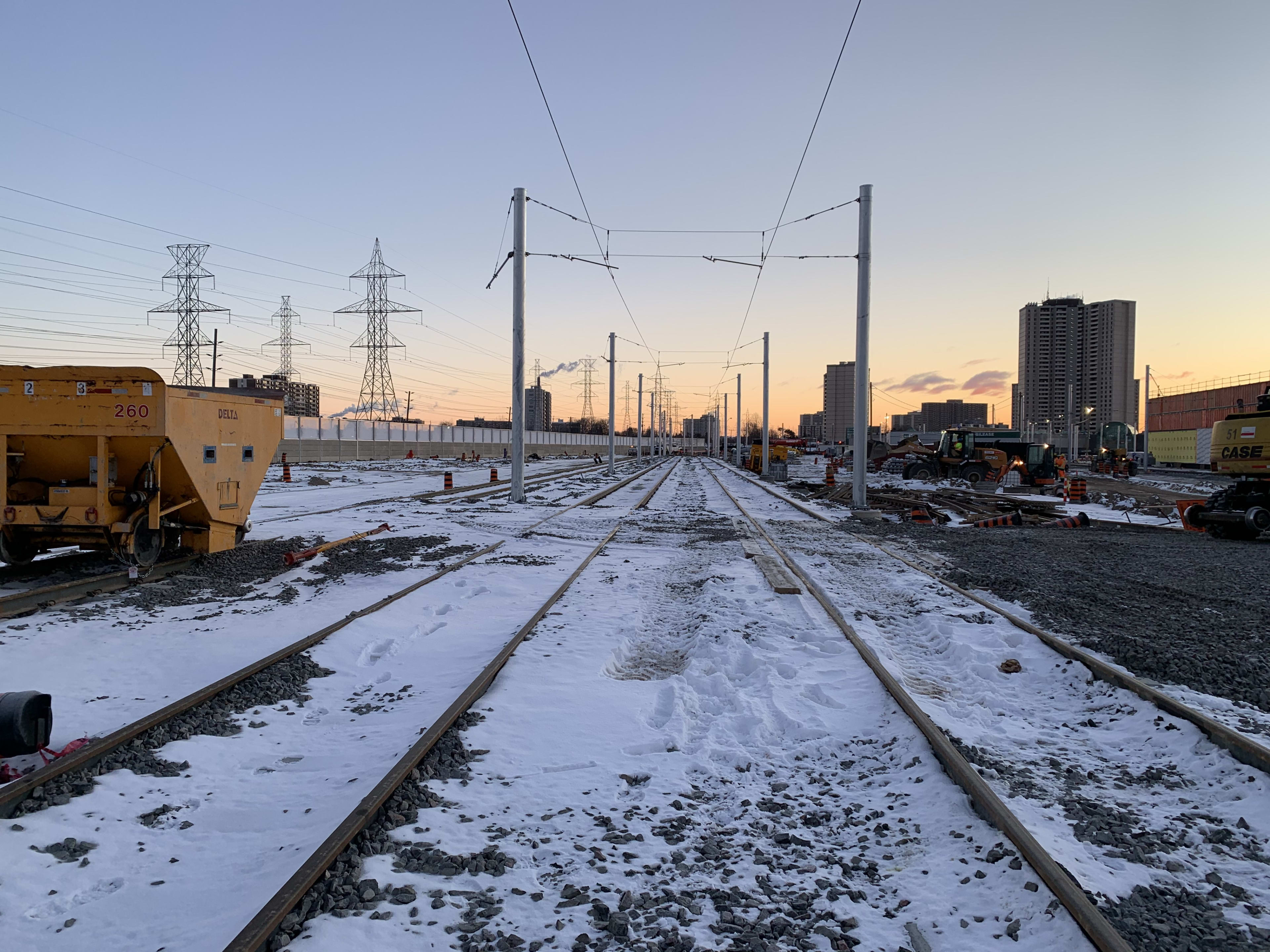Video shows first Finch West LRT power station installed
See time-lapse video of the first traction power substation at the maintenance and storage facility
Mar 3, 2021
Advances have been rapid lately along Toronto’s Finch West Light Rail Transit (LRT) route.
The first section of the route’s rail installation is in place at the maintenance and storage facility, where crews will be ready to welcome the first light rail vehicle delivery this summer.
This is the site where the light rail vehicles – often just called ‘LRVs’ – will be cleaned, stored, and repaired.
Tracks in the snow – Toronto’s Finch West Light Rail Transit route is rapidly taking shape. (Metrolinx Photo)
Soon, tracks, rails and the system used to power the train, will be laid down the middle of the Finch Avenue West roadway, creating the LRT guideway.
The ‘Burn In’
An 1,800-metre section of track must be in place before the first LRV arrives. It will run from west of the maintenance and storage facility to Sentinel Road. Crews will ‘burn in’ the LRVs, which involves running them back and forth for up to 600 km. to test them before they are put into service.
For the last year, work has been done to relocate utilities, install duct banks, and widen the road. Now, it’s time to lay down tracks along the LRT route. It begins by building concrete slabs with channels. While the concrete is setting, crews will weld 24-metre rails into 200-metre sections.
Building the Line – Including with Cork
Each section will be placed into the channels of the concrete slabs and welded together, creating a continuous rail line. The rail is held in place with jigs placed about one centimetre above the concrete surface and its alignment adjusted within a few millimetres.
Crews will then pour a specialized rubber compound into the concrete channels to fill the gap between the channel and rail.
The rubber compound has small pieces of cork, like those used to seal wine bottles. The compound will help reduce noise and vibration levels plus create a smoother, more comfortable ride. In vibration sensitive areas, foam or rubber mats will be installed under the concrete slab to further reduce noise and vibration.
A large, heated tent, covering 300 metres of track at a time, will be installed in areas where track work is taking place to reduce stresses to the rails during the cold weather. (Metrolinx photo)
Once the tracks are in place, the crew will use cranes to install heavy steel poles, also known as the overhead catenary system, that will carry electric power to the LRT line on both sides of the tracks. Wires are then strung from pole to pole to power the train.
Traction power substations will also be installed at various points along the route to provide energy to the overhead wires and power the system. The time-lapse video below show the installation of the first and largest of nine traction power substations that will be installed along the LRT route.
Guideway installation will begin at the Jane Street and Finch Avenue intersection.
Check back as we come up with more visuals – and uncork more interesting details – as the months move rapidly ahead on the Finch West LRT line.
To follow the progress, visit the Finch West LRT project Twitter, Facebook and Instagram account @FinchWestLRT.
by Erika D’Urbano Communications senior advisor
